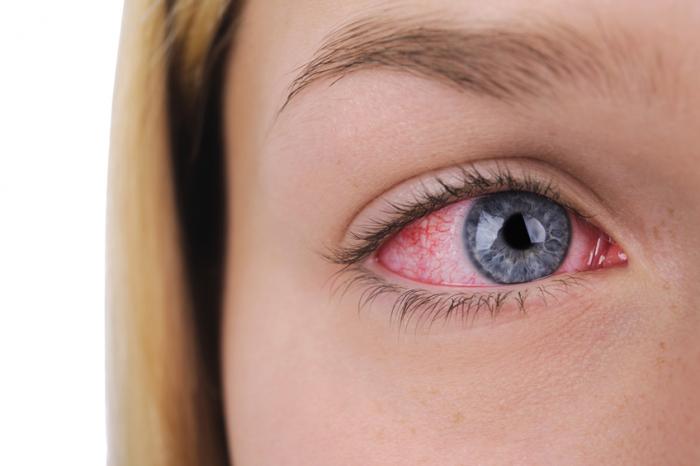Dry eye syndrome is a collection of symptoms that an individual experiences when the tears in the eye evaporate quickly or the eye is unable to produce sufficient tears, leaving the eyes dry. Although it is not fatal, it can cause extreme discomfort as well as lead to various vision problems.
Facts on Dry Eye Syndrome
- Around 5 million Americans are affected by Dry Eye Syndrome.
- Spending a lot of time staring at the computer, smartphone, or tablet without taking any break can lead to dry eye syndrome.
- Although a common problem, dry eye syndrome treatment should not be delayed as it can lead to damage to the cornea permanently.
Causes of Dry Eye Syndrome
Before getting to the causes of dry eye syndrome, let’s understand how the eyes are always moist. Normally, when an individual blinks, a film of tears is spread across the eye. The primary function of the tears is to keep the eye clean of any debris. There are three layers in the tear film-
- Oily layer- This is the outermost layer of the tear film. The eye’s meibomian glands make this layer. The oily layer keeps the tears from drying up and eventually, this makes the tear surface smooth.
- Mucus layer- The mucus layer is the innermost layer of the tear film. This is the layer that is responsible for spreading the tears across the eye’s surface that keeps the eyes moist. Moreover, the mucus doesn’t allow the eyes to stick to the eye.
- Watery layer- Responsible for the production of tears, this is the layer that is located in between the oily and mucus layer.
When an individual cries or the eyes are irritated due to any factors, the eyes produce a lot of tears. However, any one of the above-mentioned layers may not function properly that curbs the production of tears. Therefore, there is the drying of the eyes.
There are a couple of factors that can affect any of the tear layers. Some of the factors are-
- An individual is undergoing hormone replacement therapy.
- An individual has undergone a LASIK surgery recently.
- Aging is another contributing factor.
- Continuous exposure to wind or dry air, especially during winter.
- Looking at the screen for long hours without taking a proper break.
- Suffering from particular medical conditions such as thyroid ailments, rheumatoid arthritis, Sjogren’s syndrome and lupus.
- Taking particular medications such as diuretics for high blood pressure, beta-blockers prescribed for cardiac problems, antihistamines for allergies and cold, sleeping pills, medicines for heartburn, anxiety and antidepressants, some acne drugs, birth control pills, morphine and other painkillers, etc.
- Eye problems such as ectropion in which the eyelid turns outward or entropion in which the eyelid turns inward.
- Inflammation of the edge of the eyelids also known as blepharitis.
- Wearing contact lenses for long periods of time.
Symptoms and Signs of Dry Eye Syndrome
People suffering from symptoms of dry eye syndrome generally complain of any one or more of the following symptoms-
- Production of stringy mucus in or around the eyes
- Sticking of the eyelids together after waking up
- A feeling of burning or stinging in the eyes
- Continuous feeling of drying of the eyes
- A feeling that a sand particle is stuck inside the eyes
- Blurred vision, especially as night approaches
- Unable to open the eyes for long periods of time
- Straining the eyes after reading for short periods of time
- Watering of the eyes continually
- Extreme discomfort when wearing contact lenses
- Extreme sensitivity of the eye to smoke or even wind
- Extreme redness of the eyes
- Soreness of the eyes
Due to the above-mentioned symptoms, often the individual may have bouts of frustration or anxiety that can lead to worsening of the condition.
Home Remedies for Dry Eye Syndrome
There are some home remedies that can help in moistening the eyes and relieving out symptoms of dry-eye syndrome. Some of these are explained below.
- Dietary changes- According to some experts, including omega-3 and omega-6 fatty acids in the daily diet can lower the risk of dry eye syndrome. Some of the common sources of omega-3 and omega-6 fatty acids that one should consider include oily fish, walnuts, canola oil, flax oil, hemp oil, hemp seed, ground flax seed, olive oil, soybeans, and pumpkin seeds.
- Cleaning and maintenance of the eyelids-It is important to keep the eyelids free of any debris so that these don’t interfere with tear production. To keep the eyelids clean, wipe the eyes with a piece of cotton wool soaked in warm water. This also reduces the risk of any infection in the eye. Some people have also benefited after massaging the eyelid with clean fingers in circular motions to remove stringy mucus.
- Lifestyle modifications- In case the syndrome flares up due to any lifestyle or environmental factor, doctors recommend making some lifestyle changes. Some of these include-
- Drinking lots of water at least 8 to 10 glasses of water every day for sufficient tear production
- Sleeping for at least 7 to 8 hours at night to give the eyes enough rest
- During winter, to prevent the air from drying up, using a humidifier can help
- Avoiding smoke, wind or air from air-conditioners
- Taking frequent breaks from staring at screens
- Limiting screen time to prevent eye fatigue
- Letting the doctor know about the medicines that you take and causing dry eyes as a side effect
Treatment of Dry Eye Syndrome
On the basis of the underlying factor of the Dry Eye Syndrome and thorough diagnosis, the doctor recommends the appropriate treatment option. The treatment may include any one of the following-
- Eye drops- Over the counter eye drops or artificial tears is the first step that doctors recommend to keep the eyes lubricated. These eye drops are available at local chemists and can be bought without a prescription. Sometimes, these are available in the form of moisturizing gels and ointments that need to be applied at night before sleeping.
- Surgery- When the dry eye syndrome develops due to an anatomical difference in the eye such as the lower eyelids are too loose that is leading to draining of the tears too fast, then doctors recommend undergoing surgery.
Conclusion
Dry eye syndrome is an eye condition that occurs due to common factors such as looking at the screen for long without a break or suffering from a medical condition. It is preventive as well as treatable in nature. In case the signs and symptoms continue even after appropriate treatment, it indicated something far more serious. Get in touch with an eye surgeon under such circumstances.







